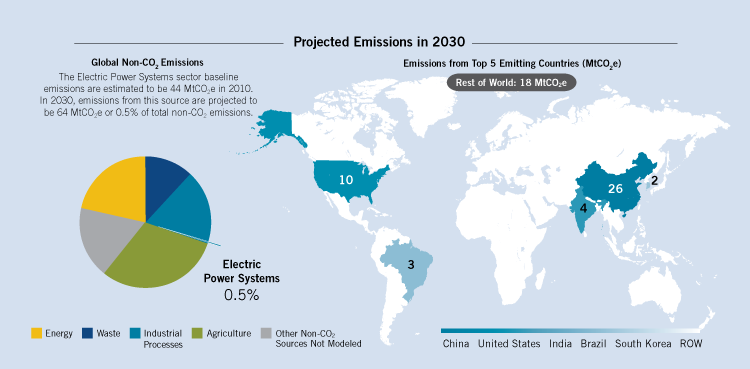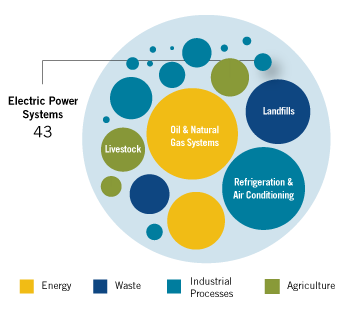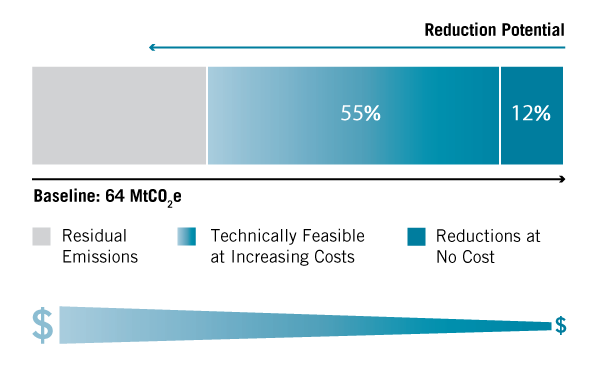Global Mitigation of Non-CO2 Greenhouse Gases: Electric Power Systems
Key Points
- The global abatement potential ranges from 7.5 million metric tons of carbon dioxide equivalent (MtCO2e) to 42.8 MtCO2e in 2030.
- Abatement measures include technologies and handling practices to manage sulfur hexafluoride (SF6) emissions and prevent leakage during servicing and disposal.
- The abatement potential at cost-effective carbon prices ($5/tCO2e or less) is projected to reduce baseline emissions by 56% in 2030.
Sector Description
Electric power systems (EPSs) use transmission and distribution equipment that contains SF6, a potent greenhouse gas with a global warming potential 23,900 times that of carbon dioxide. Emissions occur through unintentional leaking of equipment and improper handling practices during servicing and disposal. Global baseline emissions from this sector were estimated at 44 MtCO2e in 2010. Emissions are projected to increase to 64 MtCO2e in 2030, a 45% increase.
 View or download the full-size image here.(122 K, PNG)
View or download the full-size image here.(122 K, PNG)
Emissions Reduction Potential
Assuming full implementation of current technology, emissions in the electric power systems sector could be reduced by up to 43 MtCO2e in 2030. This accounts for 1% of the 4,615 MtCO2e in global reduction potential in 2030.
 View or download the full-size image here.(101 K, PNG)
View or download the full-size image here.(101 K, PNG)
Abatement Potential
Global abatement potential in this sector is projected to be 34 MtCO2e in 2020 and 43 MtCO2e in 2030, which corresponds to approximately two-thirds of the business as usual (BAU) baseline emissions, respectively. Significant reductions are available at relatively low cost. For example, emissions reduction technologies that cost up to $5 per tCO2e, can reduce emissions by 35 MtCO2e, accounting for 84% of the technologically feasible emissions reductions in 2030.
 It would be cost-effective to reduce emissions by 12%, compared to the baseline, in 2030. An additional 55% reduction is available using technologies with increasingly higher costs.
It would be cost-effective to reduce emissions by 12%, compared to the baseline, in 2030. An additional 55% reduction is available using technologies with increasingly higher costs.
View or download the full-size image here.(37 K, PNG)
Abatement Measures
Abatement measures that reduce emissions in the EPS sector include SF6 recycling, leak detection and repair (LDAR), equipment refurbishment, and improved SF6 handling. These new technologies and handling practices have largely been adopted in Europe and Japan. SF6 recycling is commonly practiced in the United States, but there remains significant potential for further reductions through improved SF6 handling and upgraded or refurbished equipment.
 Emissions reductions by technology in 2030 at $0/tCO2e and at higher prices.
Emissions reductions by technology in 2030 at $0/tCO2e and at higher prices.
View or download the full-size image here.(39 K, PNG)
